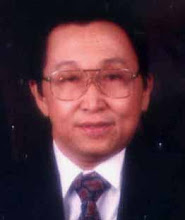Cigarette contains more than 4000 toxic chemical compounds, most of them belong to toxic Volatile Organic Compounds (VOC), one of the toxic chemical-compound called Nicotine makes the smokers addicted, smoke again and again, difficult to be stopped, Nicotine addiction is one of the hardest addictions to break. The smokers are not dead caused by Nicotine but by Tar and other toxic pollutants of cigarette smoke, like Carbon Monoxide, Nitrosamine, Formaldehyde, Hydrogen Cyanide etc.
 Nicotine is an alkaloid, found in plants of the Solanaceae family, dry tobacco contains approximately 0.6–3.0 % of Nicotine. an average cigarette yields about 1 mg of absorbed Nicotine), Nicotine molecule is very similar in shape to the neurotransmitter acetylcholine, which affects many bodily functions, including breathing, heart rate, learning and memory, acetylcholine in turn also affects other neurotransmitters that have influence over appetite, mood, and memory, when Nicotine gets into the brain, it attaches to nerve cells in places where acetylcholine would, creating the same effects.
Nicotine is an alkaloid, found in plants of the Solanaceae family, dry tobacco contains approximately 0.6–3.0 % of Nicotine. an average cigarette yields about 1 mg of absorbed Nicotine), Nicotine molecule is very similar in shape to the neurotransmitter acetylcholine, which affects many bodily functions, including breathing, heart rate, learning and memory, acetylcholine in turn also affects other neurotransmitters that have influence over appetite, mood, and memory, when Nicotine gets into the brain, it attaches to nerve cells in places where acetylcholine would, creating the same effects.
Nicotine acts as a stimulant. in the central nervous system (CNS), when Nicotine enters the body, it is distributed quickly through the bloodstream and crosses the blood-brain barrier, it takes about seven seconds for Nicotine to reach the brain when inhaled, Nicotine binds to nicotinic-acetylcholine-receptors (cholinergic receptors that form ligand-gated ion channels in the plasma membranes of certain neurons), increases the levels of several neurotransmitters like dopamine which actively involved in the brain which causes feeling of great happiness, strong pleasant feeling, alertness, sharpness, and feelings of relaxation, calmness, dopamine a neurotransmitter that is responsible for feelings of pleasure and well-being. Beside that, Nicotine reduces the appetite and raises the metabolism, causes smokers lose their body weight, by increasing the levels of dopamine within the reward circuits in the brain, nicotine acts as a chemical with intense addictive qualities, but the acute effects of nicotine wear off within minutes, so people must continue dosing themselves frequently throughout the day to maintain the pleasurable effects of Nicotine and to prevent withdrawal symptoms.
In adrenal medulla Nicotine binds with ganglion type nicotinic-receptors, increases flow of adrenaline, release of adrenalin (and nor-adrenalin) into the bloodstream, stimulates and increases the heart rate, blood pressure, respiration, and blood glucose.
Smoking cessation efforts:
There are many ways to stop smoking:
- Physical exercise and strong self-driven to stop smoking
- Quit smoking through Yoga: the different aspects of yoga such as asanas, pranayama, meditation, and breathing techniques definitely are the best techniques for quitting smoke, yoga can really play a vital role in quitting smoke, yoga improves your damaged smoking health, improves your lung capacity and strength and ultimately yoga alleviates some of the dangerous effects of smoking.
- Nicotine replacement therapy: using various forms of Nicotine delivery methods to replace Nicotine obtained from smoking or other tobacco usage, products belong to Nicotine replacement deliver Nicotine to the smoker's brain in a much slower way than cigarettes do, those products are used for smoking cessation efforts to encounter withdrawal symptoms and cravings caused by the loss of Nicotine from cigarettes. their usage are perfectly safe.\
Nicotine replacement products:
1. Nicotine patch: a transdermal patch that releases Nicotine into the body through the skin.
2. Nicotine inhaler,
3. Nicotine nasal spray,
4. Nicotine gum: a type of chewing gum that delivers Nicotine to the body, the Nicotine is delivered to the bloodstream via absorption by the tissues of the mouth.
5. Nicotine sublingual tablet,
6. Nicotine pastilles / lozenges.
- Nicotinic-receptor-partial-agonist: bind and activate the nicotinic-receptor in the brain, but have only partial efficacy at the receptor relative to a full agonist, the partial agonist actually acts as a competitive antagonist, competing with the full agonist for receptor occupancy and producing a net decrease in the receptor activation observed with the full agonist alone.
- Cytisine: is a toxic pyridine-like alkaloid, from plants Faboideae family, Cytisine is a nicotinic-acetylcholine-receptor- partial-agonist, pharmacologically it exhibits similar effects to Nicotine due to structural similarity of the two molecules, it is available for the treatment of Nicotine addiction,
- Varenicline tartrate: is Cytisine derivative which was approved in 2006 as a smoking cessation drug, Varenicline tartrate is a nicotinic-receptor-partial-agonist, it reduces cravings for and decreases the pleasurable effects of cigarettes and other tobacco products, and through these mechanisms it can assist some patients in stopping smoking.
Varenicline chemical structure
Varenicline
(7,8,9,10-tetrahydro- 6,10-methano- 6H-pyrazino (2,3-h)(3) benzazepine)
- Nicotinic antagonist: a type of anti-cholinergic which inhibits or block the action at nicotinic-acetylcholine-receptors (cholinergic receptors that form ligand-gated ion channels in the plasma membranes of certain neurons.) in the brain, Nicotinic antagonist can be used for treating drug addiction.
- Bupropion: is an atypical antidepressant that acts as a norepinephrine and dopamine reuptake inhibitor, and nicotinic antagonist.
- Mecamylamine: is a nicotinic antagonist that is well absorbed from the gastrointestinal tract and crosses the blood-brain barrier.
- 18-methoxycoronaridine: is a selective nicotinic antagonist, block nicotinic-acetylcholine-receptors in the brain and can be used for treating drug addiction.
References :
(1).Wikipedia
(2).Quit smoking through Yoga.
(3).Stop smoking
Go Gree ! Stop smoking using Natural Herbs.
Stop smoking with laser therapy
100 Healthy Habits That Can Save Your Life, Your Money, and Your Planet:


No comments:
Post a Comment